Archives of Loren Williams Fly Tying Tutorials.
LW's Isonychia F-Plus
I developed the F-Plus series of dry flies a few years ago and I have been extremely happy with the results in both form and function. When setting out to design these patterns I knew I wanted the foundation of the fly to be CdC based on my experience with the popular and effective F Fly. The F Fly is a pattern that I learned about in Europe and is gaining momentum here in the US. The F Fly is a very simple pattern with a hackle tail, thread body, and 2-3 CdC feathers for the wing. The profile of an F Fly adrift is impressive and it catches fish, but I had a few issues with it.
First, the fly is fairly high maintence, especially when the fishing is fast and furious. Since it's support is nearly fully derived from the wing, F flies tend to swamp quickly and slime easily. Constant treating and drying cut's into fishing time! Next, the fly does not hold up well in turbulent or confusing water-for the same reason, the wing alone is a fairly limiting life jacket. Third, for larger mayfly imitations the sleek profile is rather inconspicuous compared to the naturals.
My solutions to these problems were addressed as so: 1) I beefed-up the wing by doubling the typical number of CdC feathers and selecting feathers that had long fibers so there are no stems involved that could twist the bug when casting, 2) I added a ribbed slip of foam across the back to add floatation and bolster the profile, 3) I tie the F-Plus with outrigger tails using stiff CdL fibers, and 4) I introduced a spun CdC hackle collar that envelopes the wing.
The result, as you can see, screams "bug!" It's a rather simply fly to build, especially once you get a few under your belt and it uses easy-to-obtain materials. The fly casts well, floats forever, has a very accurate profile, and catches fish like nobody's business. It can handle a number of fish before any chemical treament is required and it's very durable.
I have demonstrated the Isonychia F-Fly in this tutorial, but I tie this pattern to imitate all mayfly species by simply adjusting the size of the hook and the color of the thread and foam. Furthermore, you can use dyed CdC for colorful species like cahills and yellow drakes.
Let's have a go!
MATERIALS
Hook: TMC 103BL
Thread: Brown 6/0
Tail: Pardo CdL fibers, split
Body: Thread underbody, ribbed brown foam over top
Wing: 6 Natural CdC feathers in a clump
Hackle: CdC fibers
Click on photos to enlarge.

I like the TMC 103BLJ for this pattern. An excellent substitue is the Mustad R50X.

Place the hook in your vise.

Attach the thread behind the hook eye, leaving a very long thread tag.

Double the tag and secure.

Bind the doubled/looped tag toward the rear of the shank, keeping it on top of the shank as you go. End just before the bend.


Grasp the tip of the CdL feather and gently stroke the fibers down so they stand perpendicular to the stem.

Pinch about ten fibers by the tips to keep them aligned.

Snip the bundle of tips away from the stem.

Switch hands. Measure the bundle against the hook shank. I like my tails to equal the length of the hook.

Switch the bundle back to your non-bobbin hand and place the measured point over the last wrap of thread.

Make a few pinch wraps to lock the tail bundle in place.

Bind the butt ends of the fibers to the top of the shank toward the eye. End about 1/3 back from the eye and clip the excess fibers.

Roughly split the fibers into two equal sections.

Pull the looped tag forward between the fibers to create a median so the tails will remain split.
On flies #14 and smaller I use a single strand tag to split the tails.

Lock the tag down with several tight thread wraps.

Clip away the excess.

Snip away a strip of 2mm foam equal in width to about 1/3 the hook gap.

Lock the foam in at about the 1/2 point on the shank and bind it to the rear with tight wraps.

Travel up and back one more time to securely lock the foam slip down-otherwise the body might tend to roll.

Come forward with a few turns of thread. Pull the foam forward and lock it down with two tight wraps.
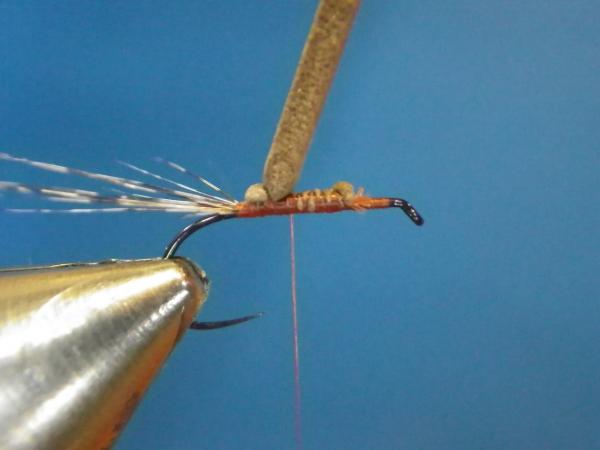
Lift the foam and come forward with a few more thread wraps.

Repeat the lift, pull, and rib process forward to the 1/3 point on the shank.
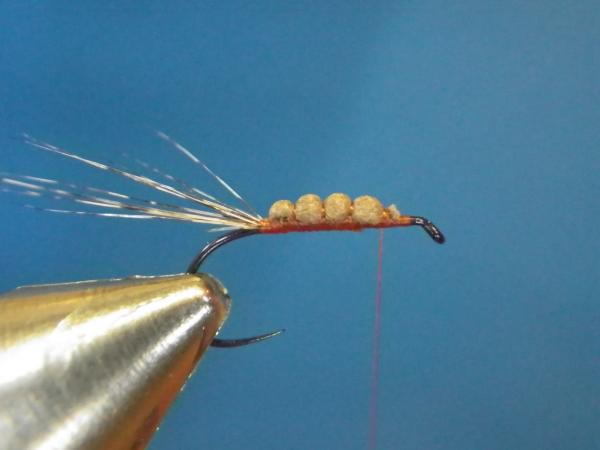
Make a few addtional thread wraps at the last segment. Break the foam away at this point.

Time to select the CdC feathers for the wing. On the left you will see the feather type I prefer-no stem in the tip, plenty of long fibrous fibers. The feather on the right is better suited for other functions.

Select six feathers and even the tips so you form a single dense group of CdC.
Measure the wing to be equal to the length of the hook.

Secure the CdC with two tight pinch wraps just in front of the end of the foam. If care was taken, the foam should have ended about 1/3 shank behind the eye, so the wing will be fixed at a point about 1/4 back from the eye.

Pull the butt ends up and back and make a few wraps of thread immediately in front. This will lock-in the wings tightly and allow you to trim the excess close without cutting the thread.

Mounted and properly measured wing. You could stop here and have a functional fly! Let's move onward though.

Create a small dubbing loop, locking it in just ahead of the wing.

Using the butt ends of the CdC feathers used for the wings, select about 3 stems and lay them atop each other.

Collectively tear away the fibers from one side of the group of three feathers.

Place the fibers into the dubbing loop with the butt ends of the fibers themselves closer to the thread than the tips. This will give the resulting "hackle" a multidimentional quality that seems to work wonderfully well.
Repeat by stripping the other side of the CdC feathers and placing them into the loop. I do like the fibers to be rather densly applied to the loop so that I can get them all involved in about 5 wraps of the loop.
This is a stuffed loop prior to being twisted.

Twist the dubbing loop to trap and disperse the CdC fibers.

Begin hackling the fly, with the first 2-3 wraps being placed behind the wing.
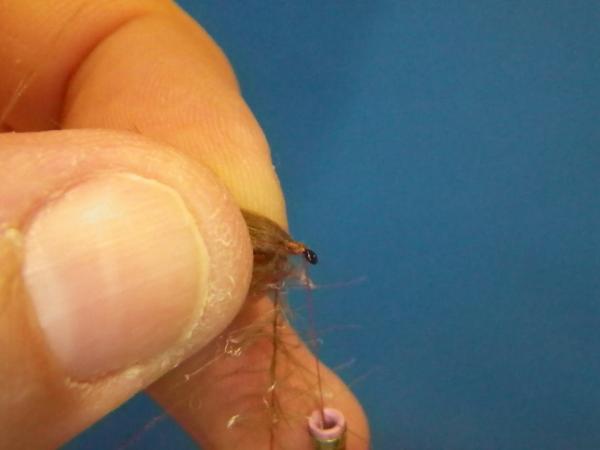
Stroke the wing and the fibers you have already wraps to the rear to clear away the front egde of the wing.

Bring the dubbing loop forward and place the next wrap of hackle directly into the seam between the wing and body.

Make subsequent wraps forward, stroking the fibers to the rear between each wrap. Do not crowd the eye, especially using the TMC 103BL which has a very diminuitive eye as it is. I am happy if I get 4-5 wraps of the CdC hackle onto the fly. I adjust the hackle density by using more, or less, CdC in the loop as opposed to using more, or fewer, wraps.
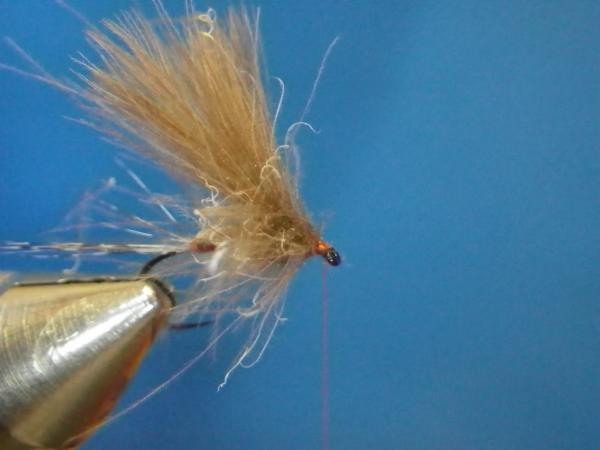
Pull all the fibers clear of the eye and wrap a neat small head. Whip finish and clip the thread.

Be aggressive with a Velco brush and brush through the wing and fibers from front to back. This will free anything that was trapped, and give the fly a bit of a combing to clean up the mess a bit. I do like to leave it messy as that is what promotes flotation to I avoid trimming the CdC. You will end up with some that are long...it's all good. Trust me, the fish will not mind.

LW's Isonychia F-Plus-Finis!

Top view.
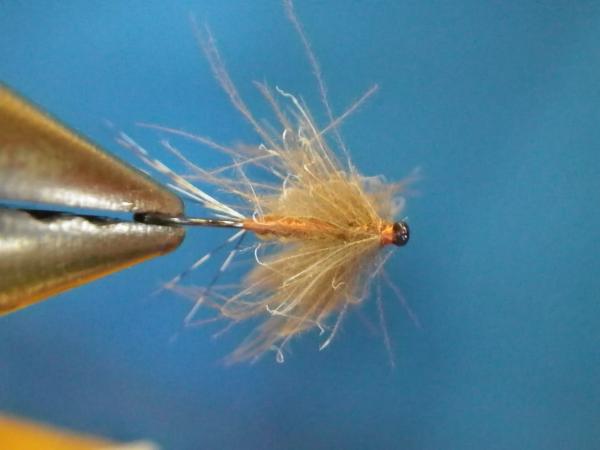
Bottom view.

(Left to right): BWO, Light Cahill, Sulphur, March Brown, Isonychia F-Pluses
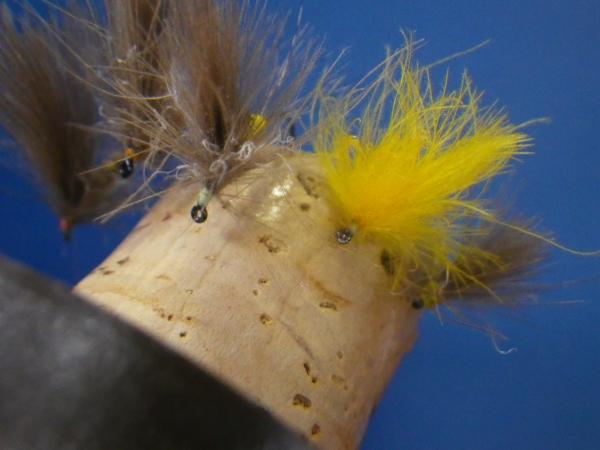
(Left to right): Isonychia, March Brown, Sulphur, Cahill, BWO

Third angle.